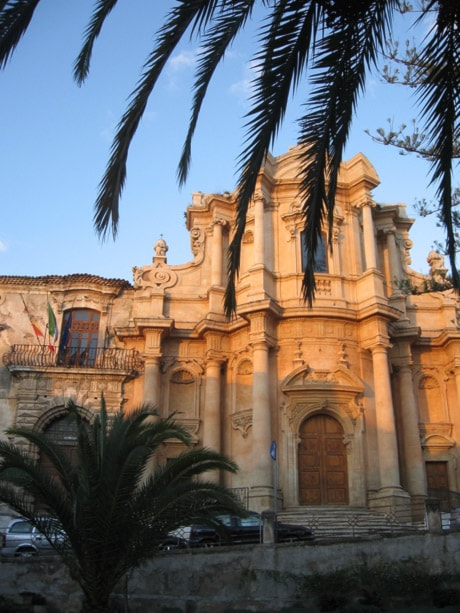MONREALE, Italy — I am inside one of the most glittering monuments to Christianity — the mosaic-filled cathedral of Monreale — talking to a conservator, whose apron is covered in Arabic script, about U.S. President Barack Obama.
As our chat about possible new American policies in the Middle East interrupts his excruciatingly slow restoration of the Duomo’s 900-year-old floor mosaic, I can’t help thinking, only in Sicily.
Throughout its 2.5 millennia of history, this jarringly gorgeous Mediterranean island has been at the crossroads of drastically different cultures.
Miraculously, it has managed to fuse those contrasts in a peaceful dialogue. The fruits of that fusion make Sicily one of the most intriguing regions of Europe.
Twice over the last decade, I have done week-long tours of the island, marvelling at everything from Catholic chapels bejewelled by Muslim artists to the everyday heroism of anti-Mafia businesses. A visit to Sicily is a study in the unexpected fusion of times and cultures. And these are a few of my favourite pairings:
Multicultural devotions: Bleary-eyed from the overnight ferry that took me from Naples to Palermo, Sicily’s capital, I made a beeline for the Cappella Palatina, the chapel built in the early 1100s by the Norman king in his palace complex. At 8:30 a.m., I had it for myself for a blissful few minutes before the tourist buses arrived, enough to be transported by the glitters of gold chasing each other from the wall mosaics into the painted kaleidoscope that is the carved wooden ceiling.
Under the patronage of Sicily’s first Catholic king, Muslim artists executed the ceiling, complete with Kufic inscriptions, while Greek artists created mosaics representing Christ and New Testament scenes in the Byzantine tradition. Straight from the era of the crusades comes the most dazzling artistic and cultural synthesis of the medieval Mediterranean world. Nobody knows exactly how this harmony came about, but it’s both inspiring and humbling to feel they had figured out a way to live symbiotically despite differences we are still struggling with 900 years later.
Other can’t-miss glories of the Palermo area from the time of the Normans are the fortress-looking churches that hide eerily realistic golden mosaics: The Monreale Duomo, perched high on a barren, prickly-pear studded mountain; the Martorana church in Palermo, across from the mosque-looking, red-domed church of San Cataldo; and the Cathedral at Cefalu, standing sentinel over the medieval fishing village.
Antiquity Alive: Ancient Greek colonizers snapped up the best vistas in Sicily. I can’t decide if the most scenic archeological site in the Mediterranean is Segesta in its splendid valley isolation among pines and honey-scented wildflowers; Selinunte, framed by eucalypti on its Africa-facing sandy shores; the Taormina theatre opening over the sea and the volcano, Mount Etna; or Agrigento’s Valley of Temples, by sheer size the most stunning of them all. I like the latter best in the late afternoon, when the wind-eroded stone of its two best-preserved 450 BC Greek temples — the nearly intact Tempio della Concordia and the Tempio di Giunone up the ridge — turn strawberry gold in the dusk and then are floodlit among the dark silhouettes of olive trees and agave plants.
Much criticism has been aimed at the ugly concrete buildings from modern Agrigento looming over the next hillcrest but I find the contrast can’t possibly spoil this view. At most, I find it shames our modern cookie-cutter architecture juxtaposed to the hushed, solemn perfection of these temples.
Revitalizing hidden treasures: If Sicilians 2,500 years ago stunned by vistas, those who built palaces and piazzas in the Baroque era astonished by intricacies. Noto, Ragusa Ibla and my favourite, the Ortigia island neighbourhood of Siracusa, are full of churches and palaces exuberantly carved with mythical figures and floral arrangements. Once literally crumbling in decay, they have been scrubbed to a shine like aristocratic drawing rooms. Subtler and more sumptuous at the same time are the palaces of the Sicilian nobility, those haunted by Burt Lancaster in the 1963 film The Leopard.
Take two palaces where you can arrange to stay: The countryside villa of Baron Luigi Bordonaro di Chiaramonte, built in the 13th century inland from Agrigento, and the gorgeously frescoed Palazzo Ajutamicristo of the Barons Calefati di Canalotti in Palermo’s historic centre. Both young owners are gambling that tourism will help their historical treasures stay vital.
Maria Calefati said hers is one of five or six families who are staying in their ancestral palaces, revitalizing the still dangerously neglected core of Palermo. Bordonaro says of the villa and surrounding olive groves that have been in his family for 300 years: “It’s my home, it’s my commitment.”
Anti-Mafia food: Another young Sicilian, Angelo Fabio Conticello, is taking an even riskier gamble: Fighting real-life godfathers one spleen sandwich at a time. Conticello and his brother own the iconic Palermo restaurant Antica Focacceria San Francesco, so famous that when I visited it I thought the squad cars in the little square outside where there to protect some celebrity gorging on its octopus or fried vegetable plates.
But the 24-hour police escort is actually for the Conticellos, who in 2006 denounced the dons who had come to claim a “pizzo,” the bribe the Mafia makes many Sicilian business owners cough up. “There is fear, of course, but there is hope. People are beginning to rebel, are starting to refuse (to pay bribes) because of conscience, because of their children, too,” said Conticello, who has a 13-year-old son.
The restaurant has joined some 300 businesses in Palermo that went public as “pizzo-free.” While tourists are extremely unlikely to come face to face with the Mafia, they can contribute to Sicilians’ everyday fight by patronizing establishments that resist mob influences.
